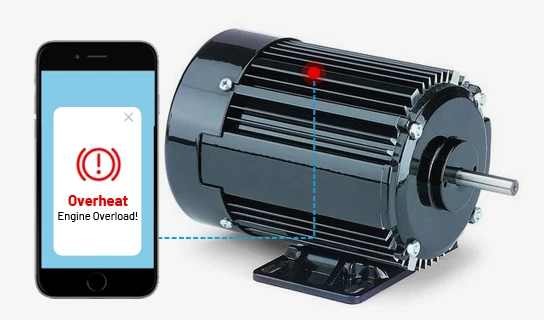In any Process Plant, there are motors, fans, compressors, and drives present and the power they receive has Sags, Swells, harmonics, transients, and unbalances in it. So it is very important to monitor these events and report them so that corrective action can be taken.
1. Voltage Unbalance
It is a measure of equality of 3-phase voltages. Higher Voltage Unbalance shortens the life or premature failure of three-phase induction motors. Voltage unbalances leads to Current Unbalance which leads to high vibration and mechanical stresses, overheating, and torque pulsation.

Voltage unbalance causes:
- Mechanical stresses in motors due to lower torque output
- High current than required in motors and three-phase rectifiers which control the firing angle of the motor.
- Unbalance current flowing in neutral conductors in three-phase wye systems
So, it is very important to equally distribute the load in 3 phases, unbalance is also cause due to worn contacts or loose connections of the loads.
2. Transients
Transients are the unwanted spikes in voltages that may come either from the internal plant load conditions or capacitor bank load changes or external load disturbances outside the factory or even due to environmental changes like lightning etc. A voltage higher than 50V of nominal voltage is considered Transient generally. Transients can occur for a few microseconds to milliseconds. There are many other reasons such as contact bounce, arcing, capacitor banks switched on/off. So it is very important to replace faulty contacts or contactors.
Transients impact motors are badly such as insulation breakdown which causes unplanned downtime for the plant. So, it is very important to monitor Transients, so that users can take corrective action on the same.
3. Voltage Sags
This means a reduction of voltages of more than 10% of the nominal value for a longer duration of time (longer than a minute). This occurs due to large loads being turned on such as motors and compressors or voltage drops due to undersized conductors.
4. Voltage Swells
Opposite to Sags, it is a surge in voltage more than 10% of nominal voltage for a longer duration, this may occur due to switching OFF on higher loads. This also may occur in case of renewable energy sources such as Solar etc. are connected to the power systems.
5. Harmonics
Harmonics are the current flown in the multiples of fundamental power frequency 50 or 60 Hz. The normal meter can not measure these currents only True RMS meters can measure these currents and it remains unaccountable most of the time which cause a surge in Power bills. There are many issues that occurred due to Harmonics in the equipment, those are:
- Overheating of Fans and Motors, Transformers, solenoid valve coils
- Bad operation in electronics control circuits such as PLCs, VFDs, and Controllers
- Improper operation of Final control elements such as valve coils, heaters, and Motor controllers.
- Reverse torque in motors reduces the efficiency and causes overheating.
Normally electronic loads operate on DC currents and the load patterns of these loads are not synchronized with the 50/60 Hz voltage waveform. These loads are referred to as “Non-Linear” loads and these produce high harmonics and fed them back to the power system.

Total harmonic distortion (THD) calculated by MIDAS – A Power IOT device should not exceed more than 5% otherwise, in case of higher THD, you can use MIDAS diagnostics where you can identify troubled harmonics caused the problems such as overheating or vibration in your power circuit. By identifying these frequencies, you can use filters to diminish these frequencies or find a root cause of these and take action on them.
MIDAS also provides General and Detailed Diagnostics reports where it can record the events of Transients, Sags, Swells, voltage and current unbalances for the day or week, or month. Detailed diagnostics report gives you all list of events occurred and volage and currents at that time.